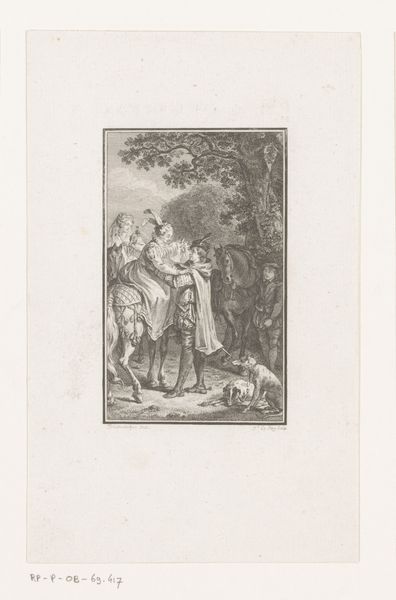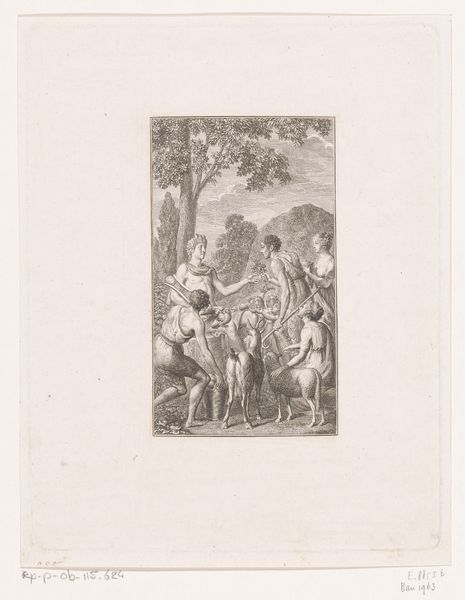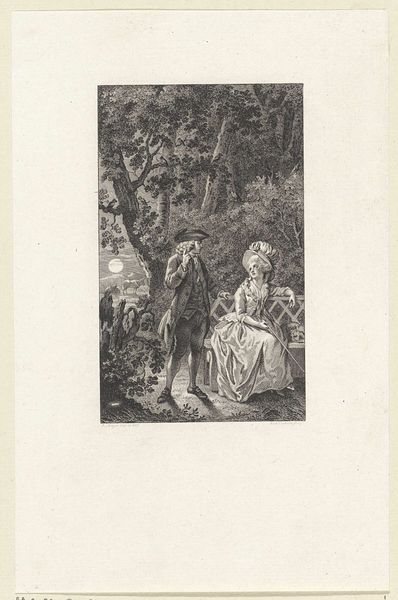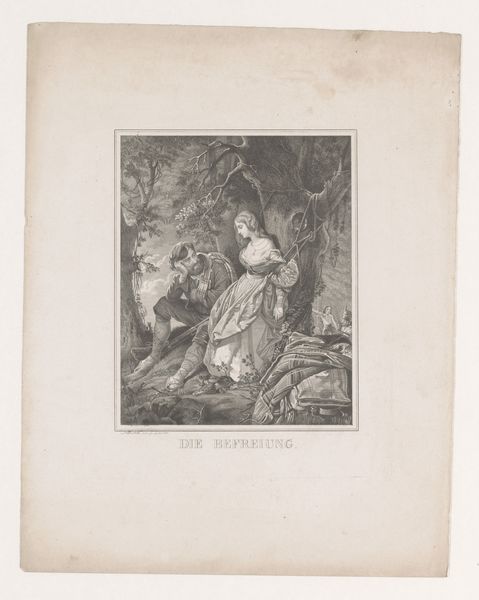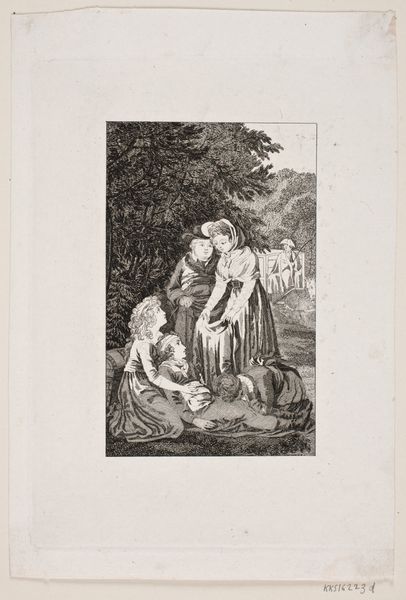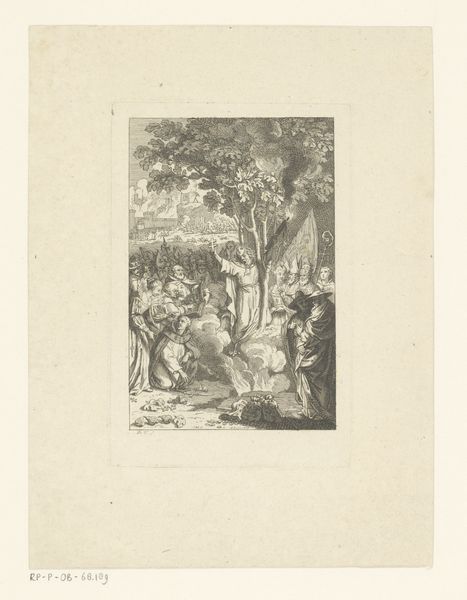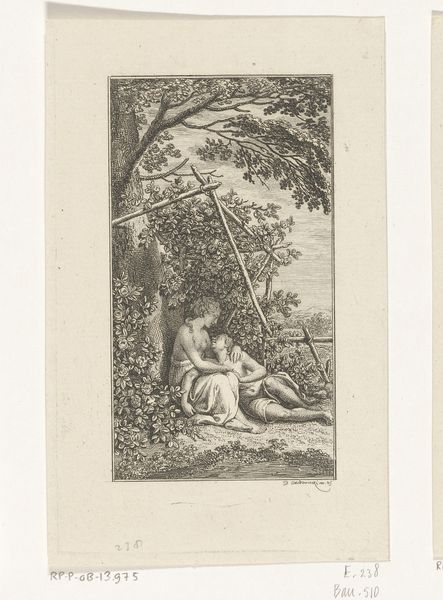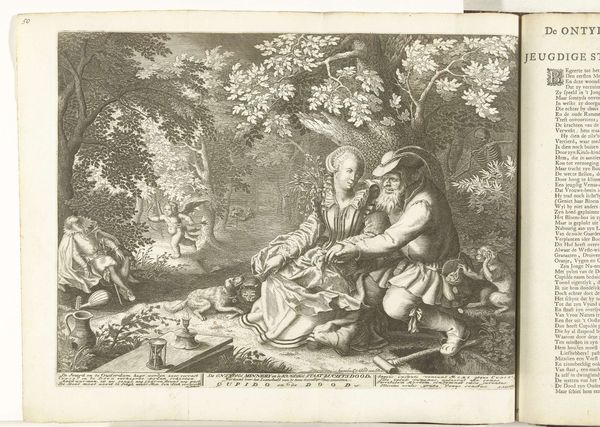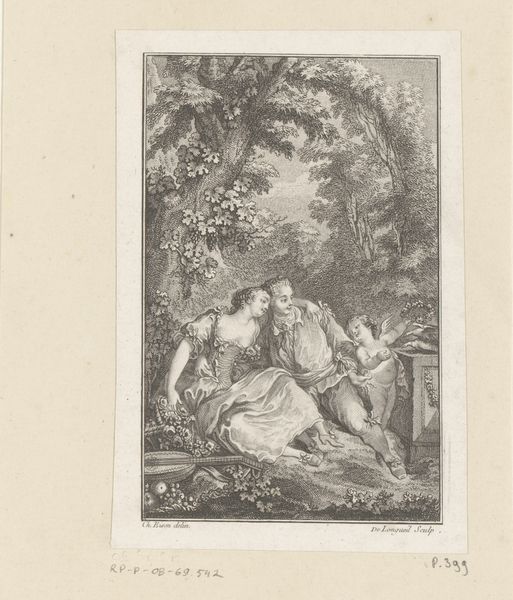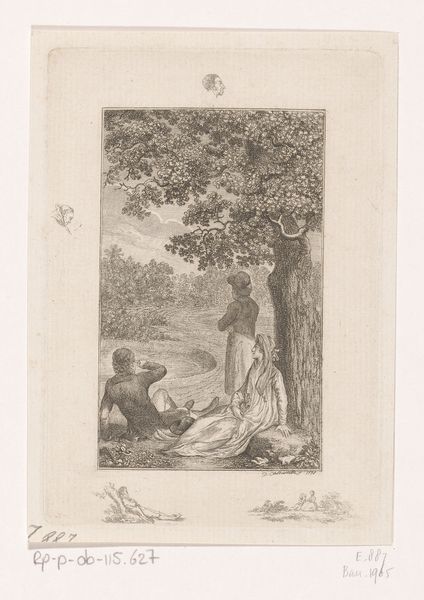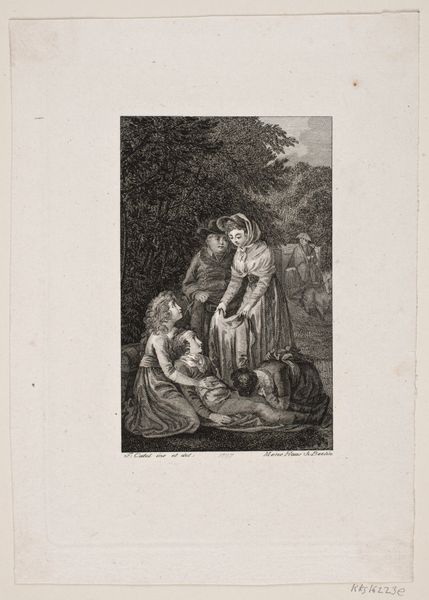
Dimensions: height 243 mm, width 181 mm
Copyright: Rijks Museum: Open Domain
Curator: Let's discuss this captivating engraving from 1765, entitled "Lente" by Harmanus Vinkeles, currently housed in the Rijksmuseum. The figures, the texture, the light! What are your first impressions? Editor: Stark tonal contrasts immediately command attention. It's a classical idyll – almost aggressively pastoral in its arrangement and scale, with this overly dramatic light illuminating every bit of space within the composition. Curator: The almost oppressive composition that you notice certainly seems deliberate. Consider the symbolism—'Lente' is the Dutch word for Spring. How does that seasonal reference inform the visual narrative? Editor: Absolutely, it evokes renewal—youthful love amidst the fecundity of the natural world. Note the young couple, holding hands in the lower centre, nestled amongst animals, and then notice, in contrast to the detailed subjects closer to us, the use of sfumato toward the distant treeline. Curator: And that central, cherubic couple speaks to the idealized forms prevalent during this time. Their clothing, the somewhat cloying sweetness of the scene... I find it difficult not to view it through a lens that acknowledges the complex societal power dynamics embedded in such idealized representations of relationships and class. What readings might we take from this piece today, particularly from gender studies, philosophy, or cultural studies? Editor: The detail, it almost invites such interrogation! Take for instance, the way light is rendered across diverse textures such as skin, bark and leaf, a detail also prominent in his other, mostly topographical work. This precise rendering of materiality is at the centre of this style of Baroque landscape. It isn't merely mimetic or representative, rather it offers a tangible viewing experience in an imagined landscape. Curator: So it's that tangibility—or that heightened awareness of textural qualities—that defines its essence. It brings the viewer closer to something universal, yet constructed. Editor: Yes, universal but utterly constructed, idealized. The light, the tonality, and, as you said, the detail—it brings the constructed world to our reach, it practically places it at our fingertips. Curator: Considering our different approaches, perhaps that's precisely where its enduring relevance resides—both a window into a particular socio-political framework and a tactile engagement with the formal qualities of an aesthetic object. Editor: Agreed. It offers an exciting viewing experience and exemplifies its period, though perhaps we must acknowledge that this type of idealization and formal acuity can carry within itself its own subtle commentary and perhaps even be quietly revolutionary.
Comments
No comments
Be the first to comment and join the conversation on the ultimate creative platform.
